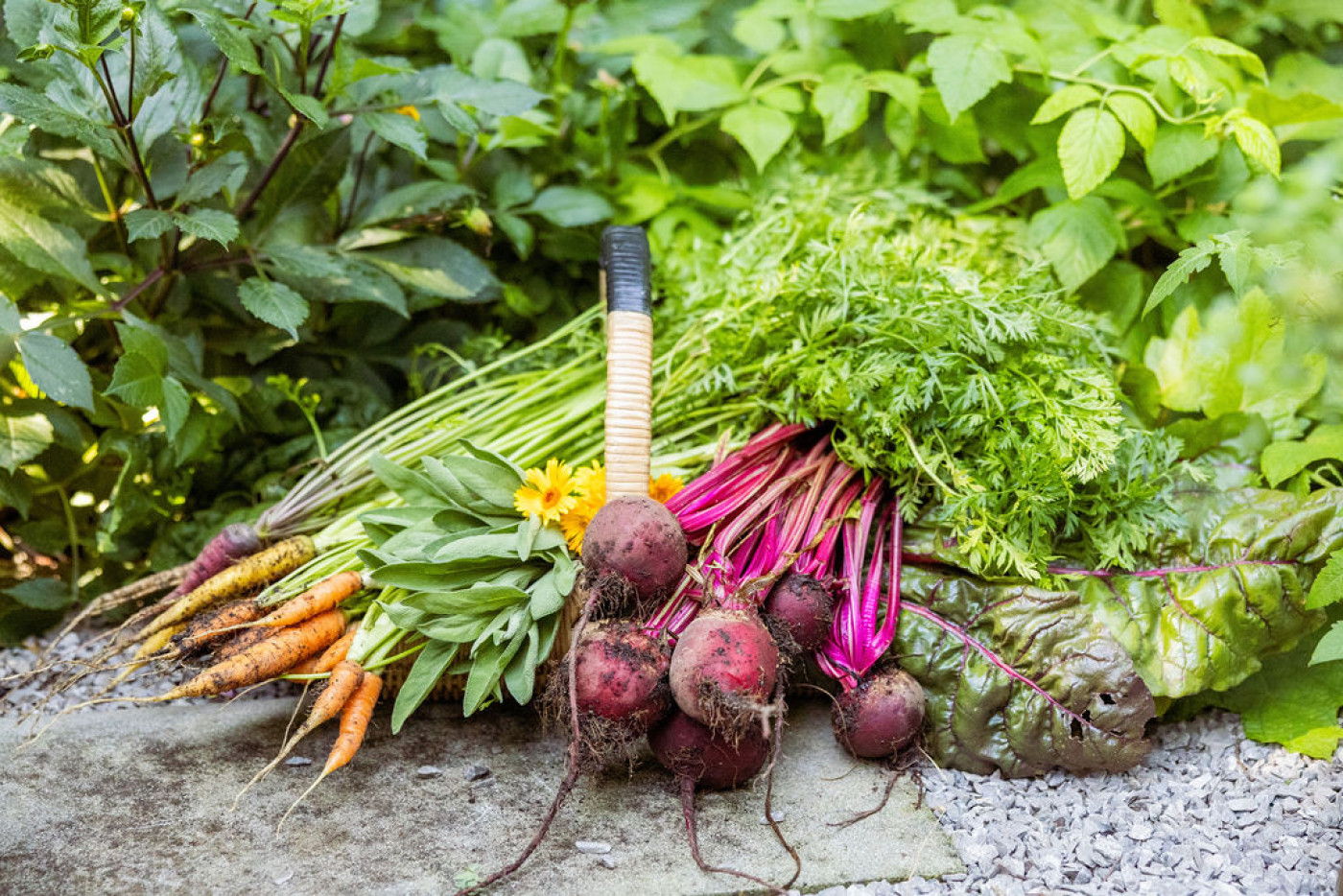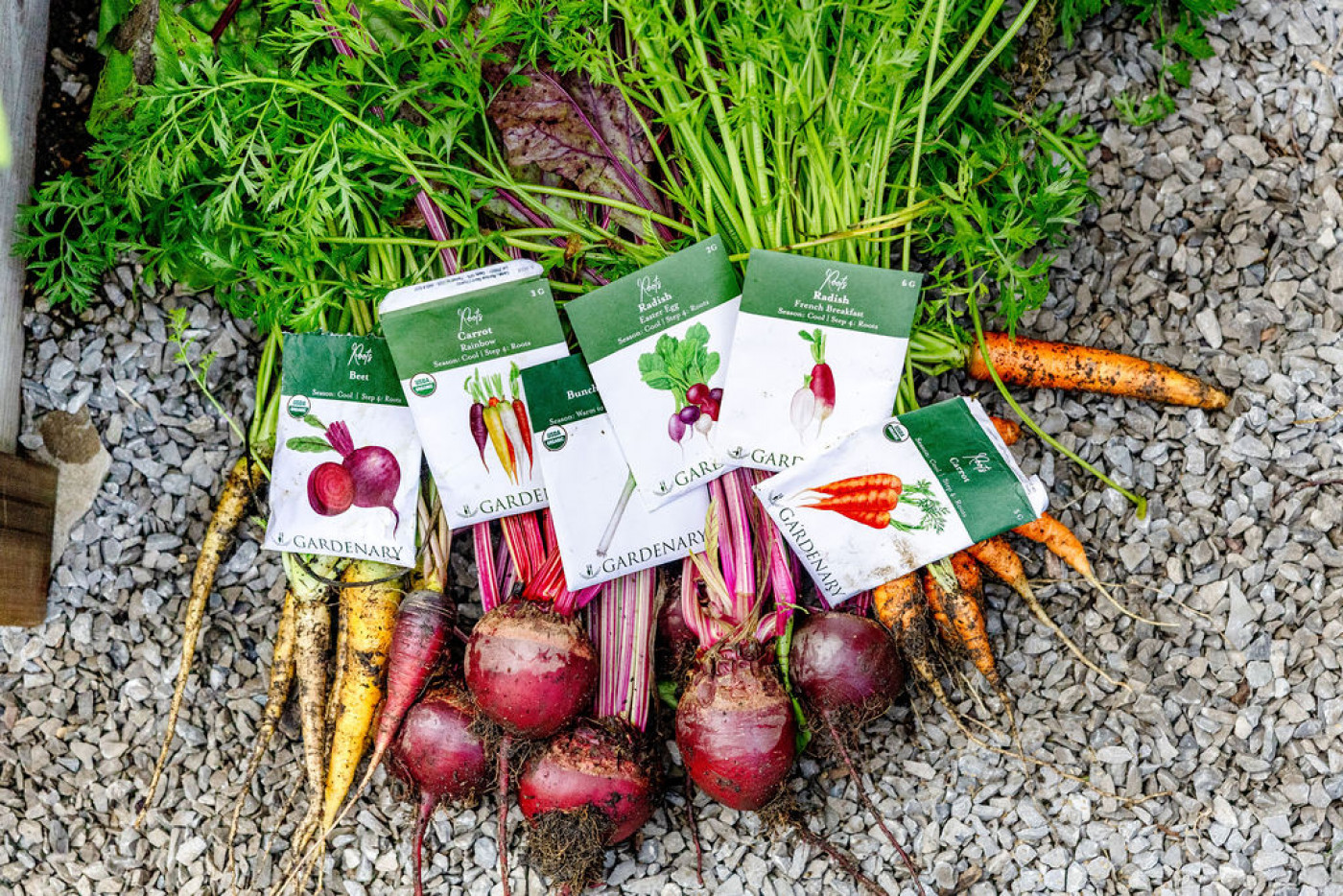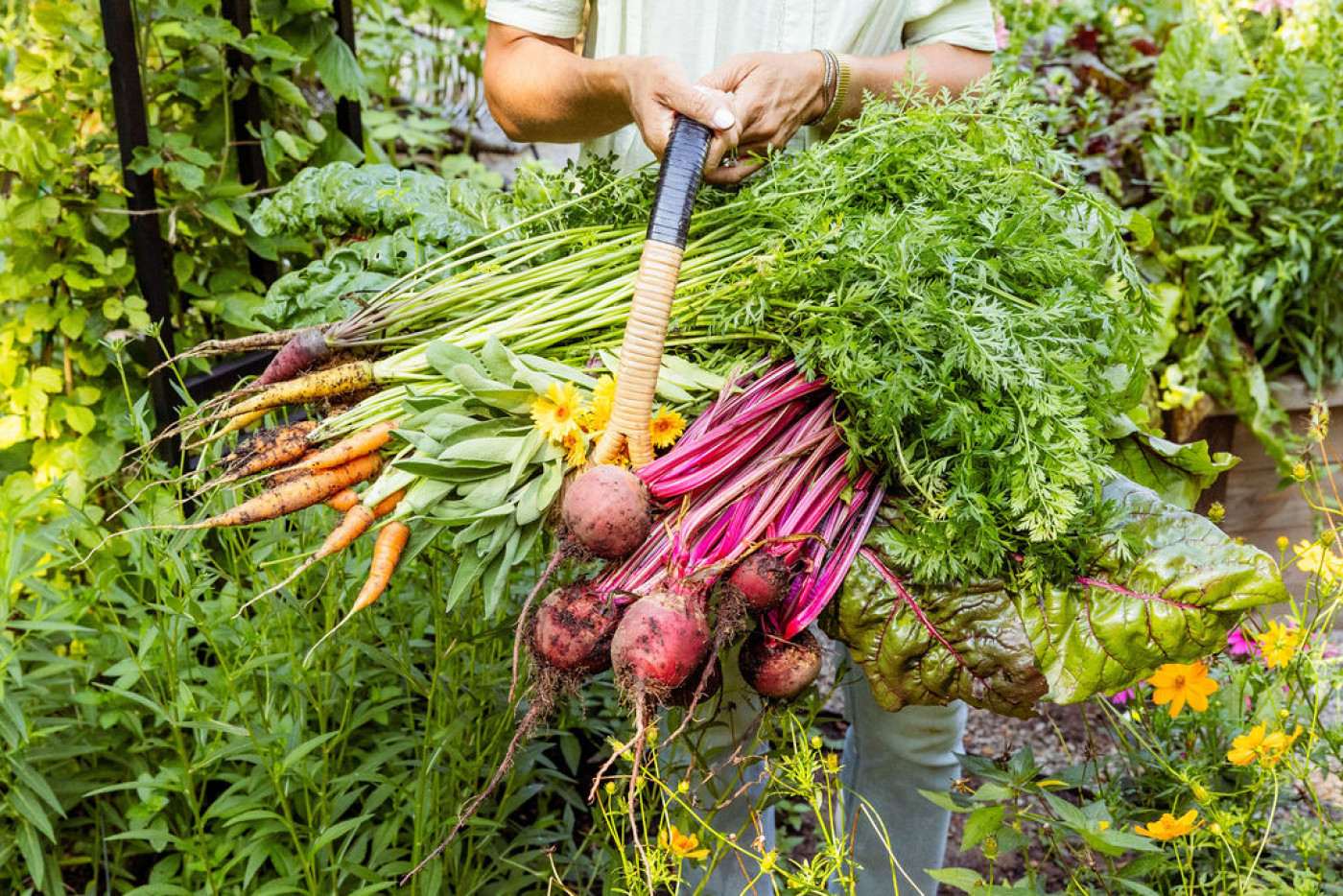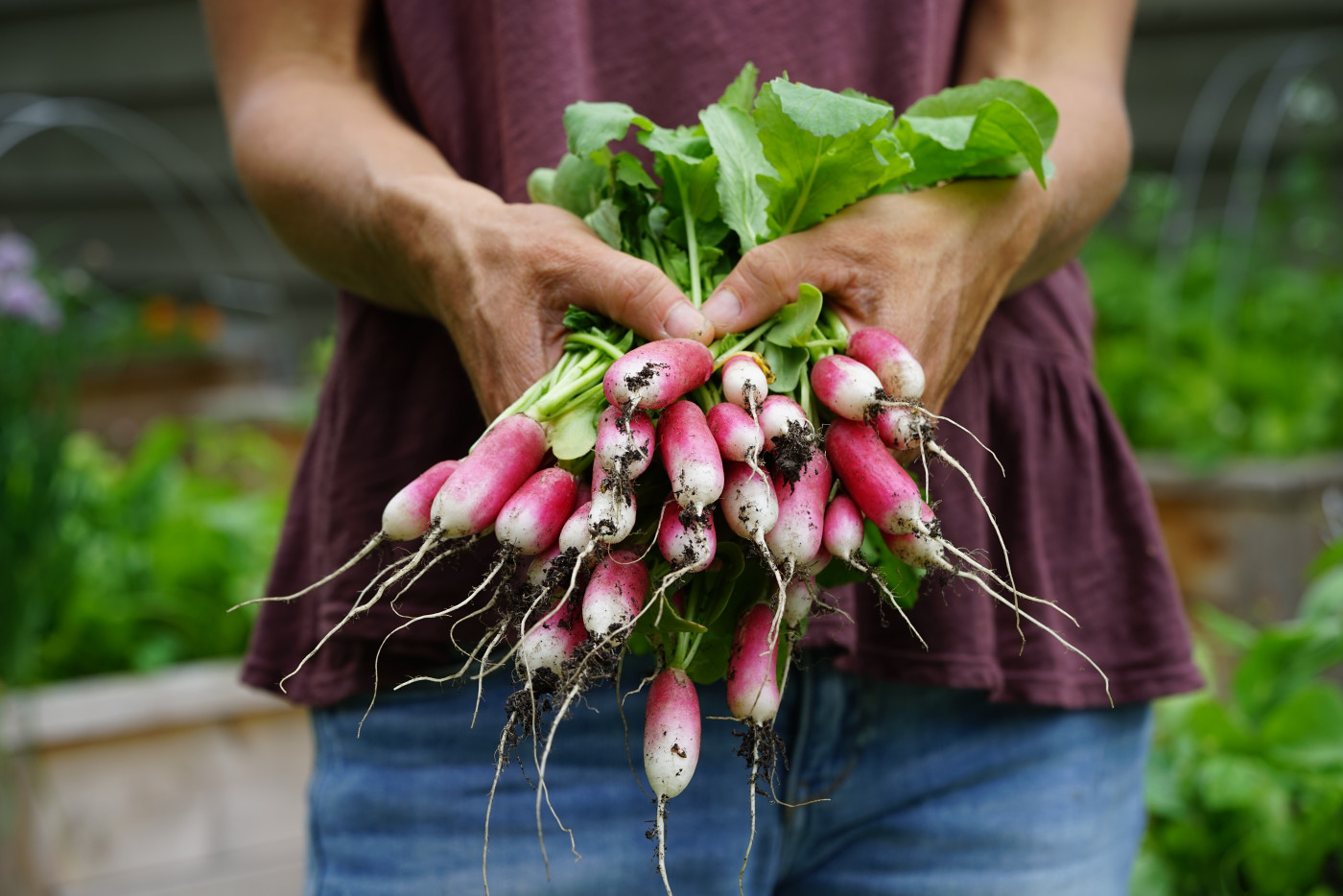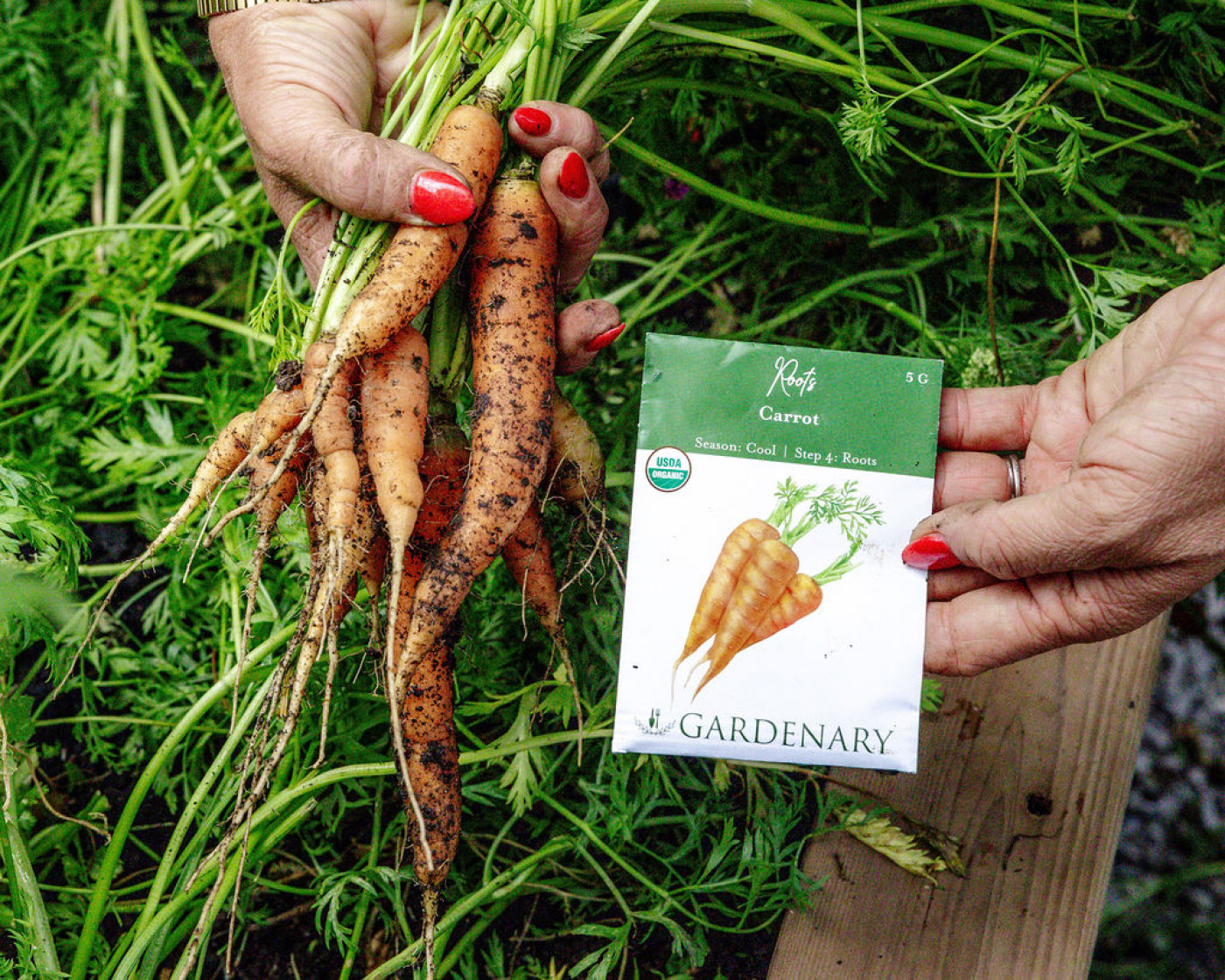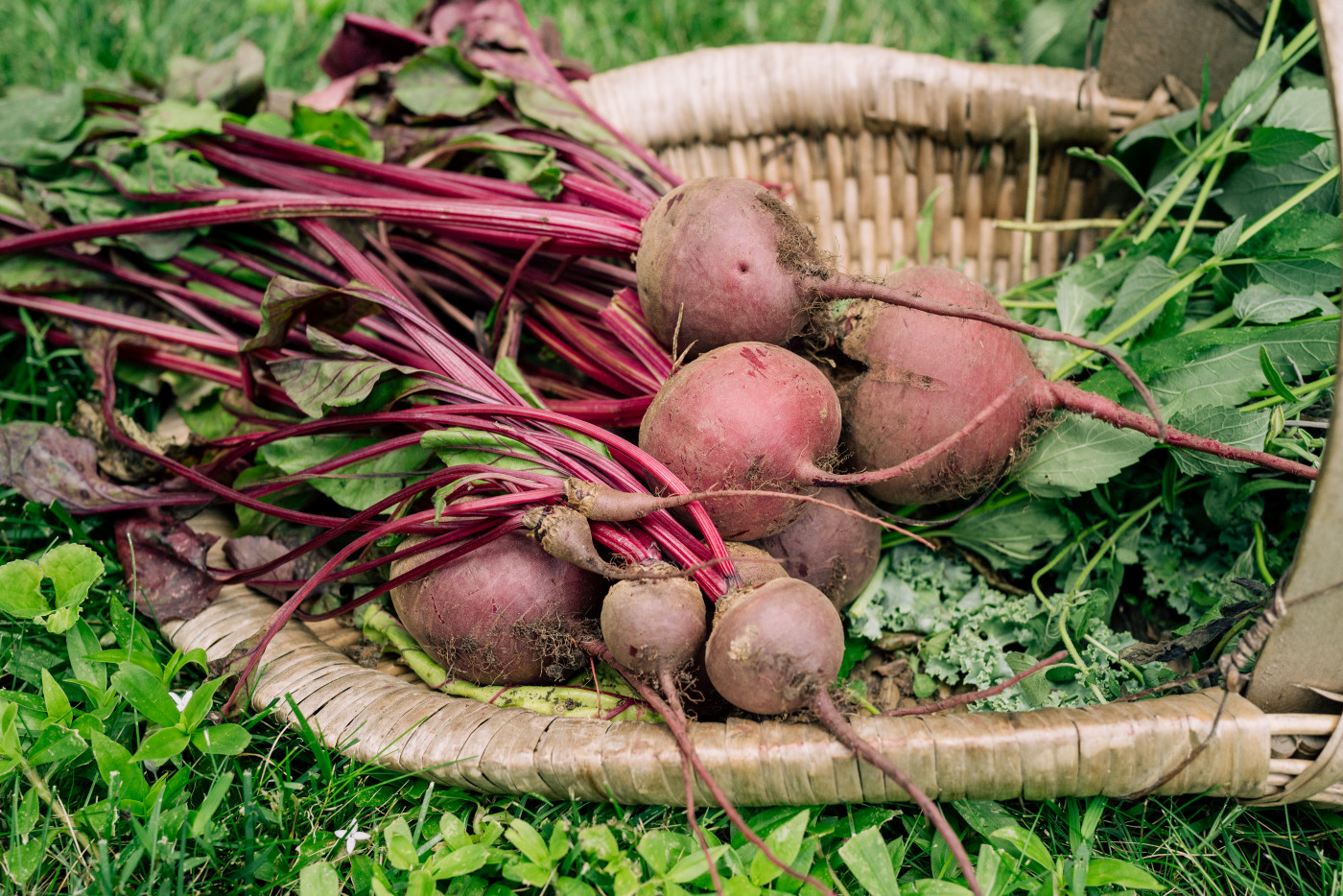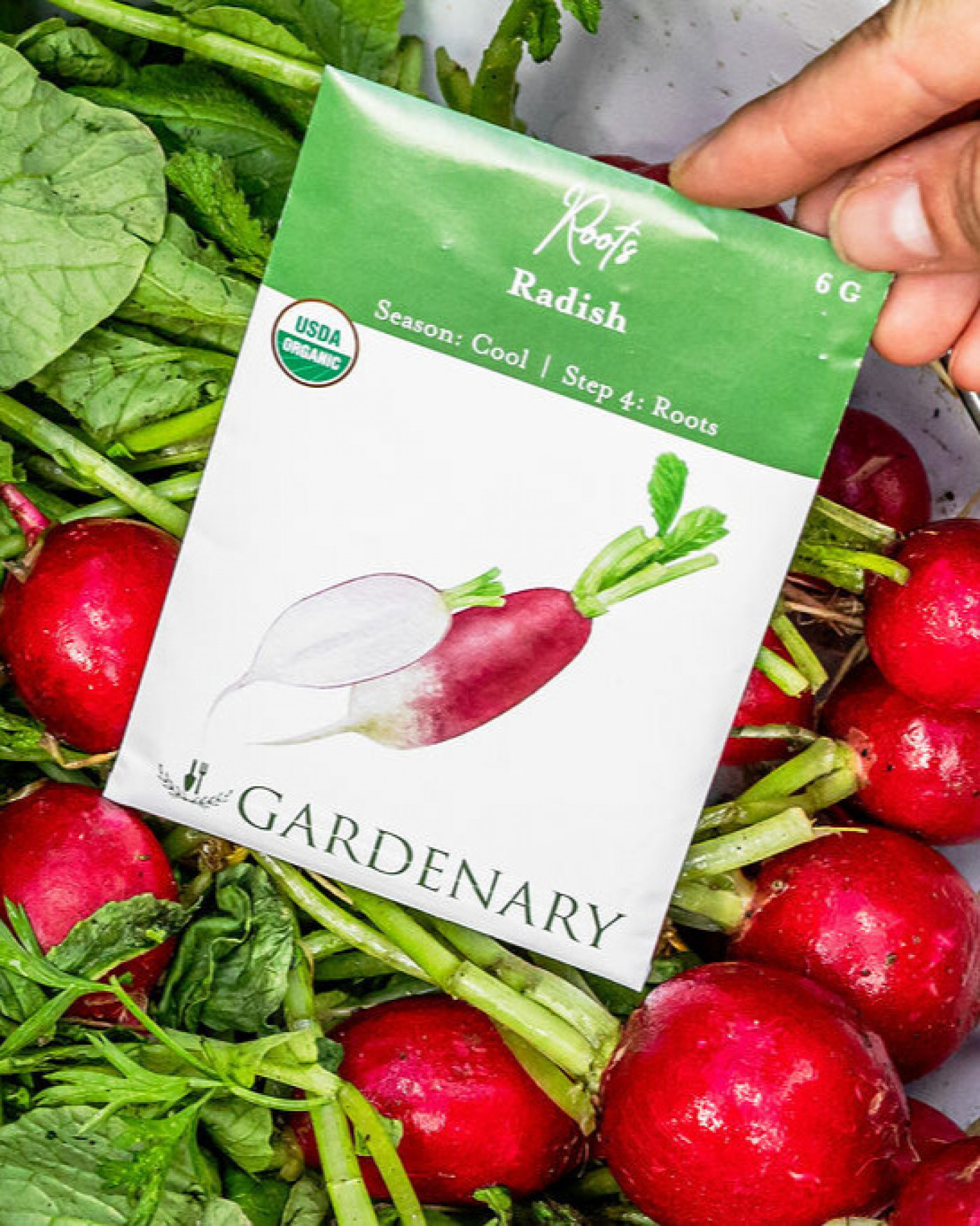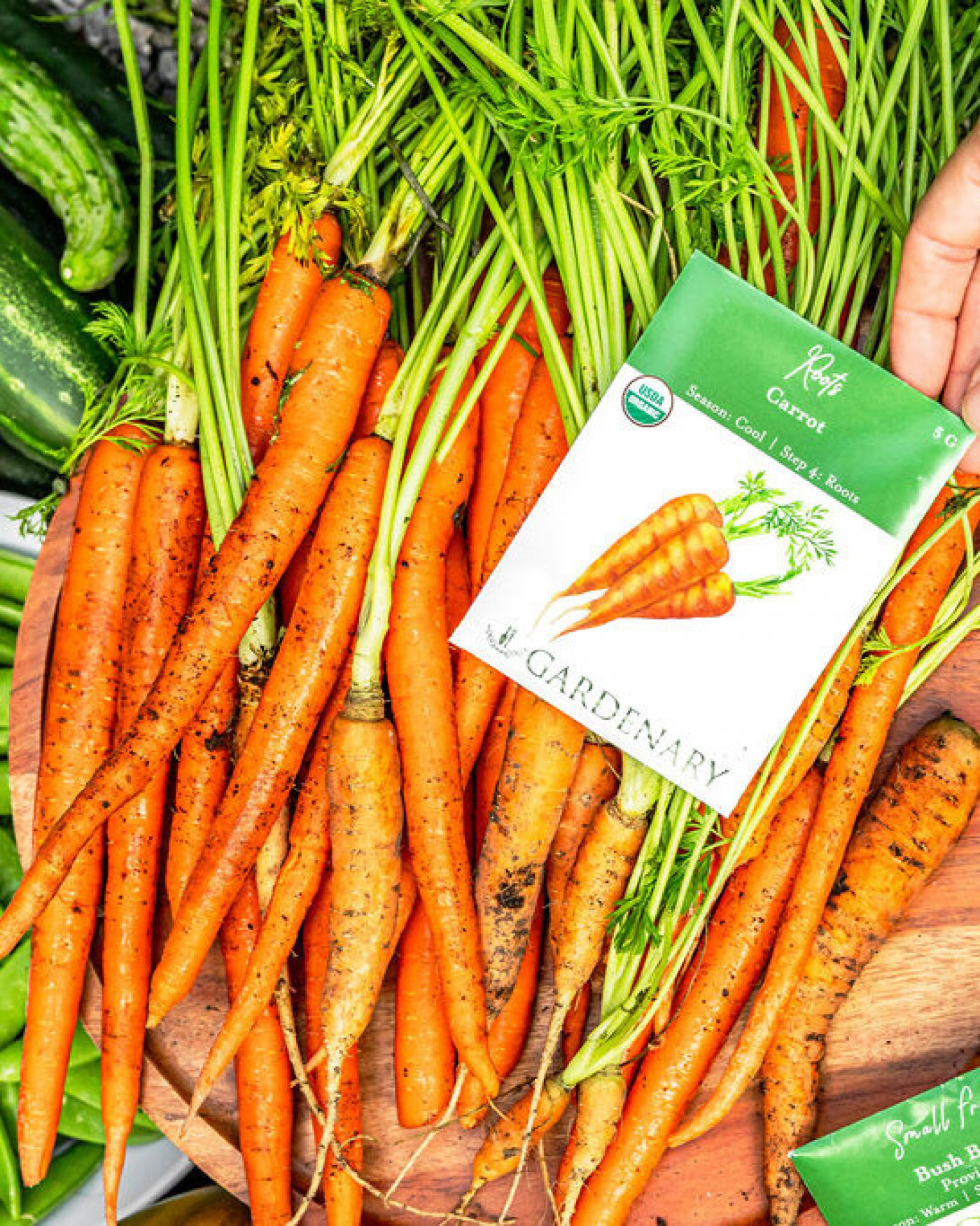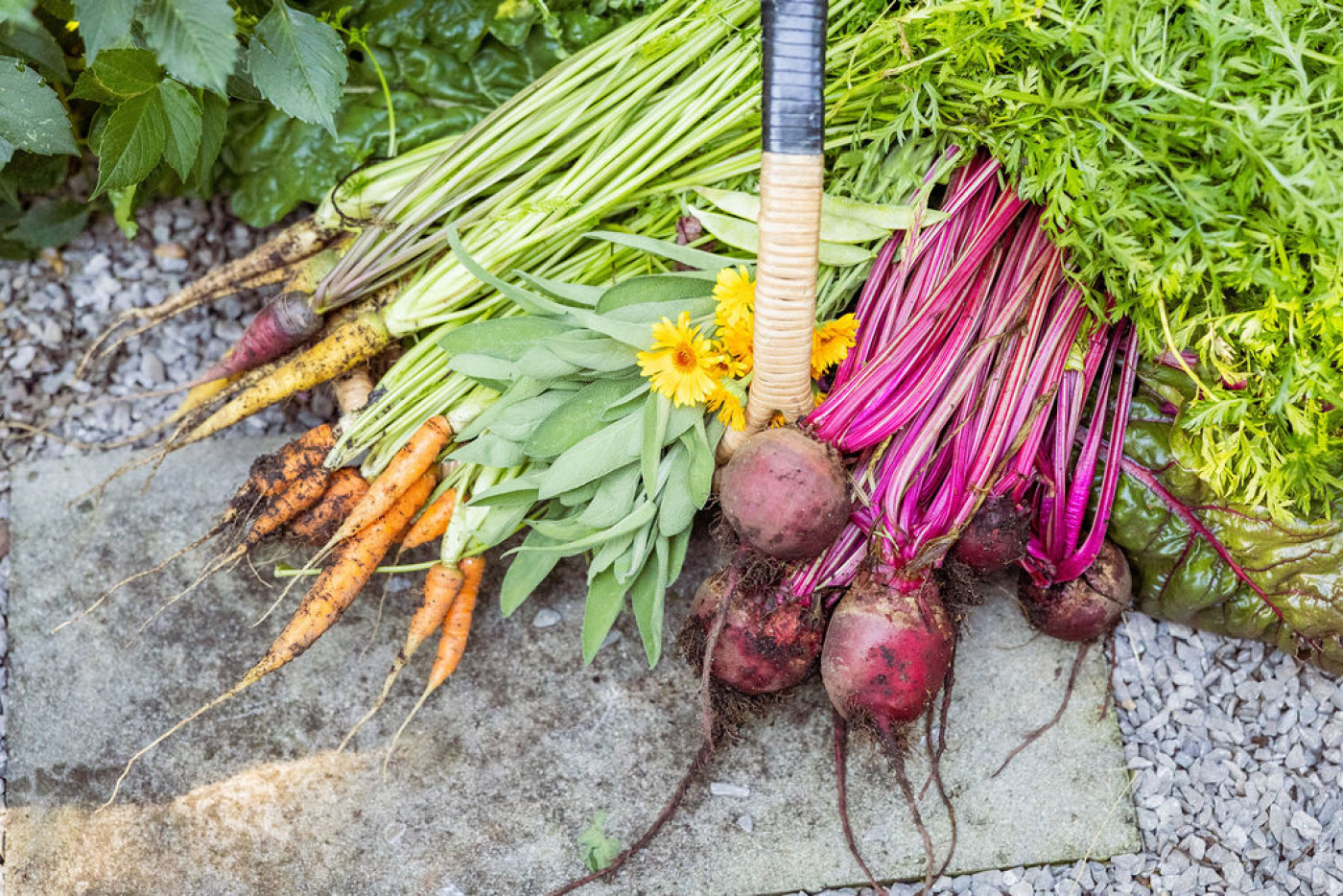When summer’s heat begins to ease, the garden shifts gears. Cooler temperatures, gentler sun, and steady moisture make fall the perfect time to grow root vegetables. These underground treasures love the chill, developing sweeter flavors as the air cools. If you’ve never tried planting a fall root garden, this is your season to dig in—literally!
At a Glance
- Plan your timing with frost dates: Use the Gardenary Frost Calculator to find your first expected frost, then count backward to plant root crops like radishes, carrots, beets, and turnips at the perfect time for a sweet, steady fall harvest.
- Grow smarter, not harder: Start with easy crops like radishes and carrots, sow successively for a continuous supply, and build healthy soil organically to keep your kitchen garden thriving all season long.
Why Fall Is Root Vegetable Season?
Root crops thrive in the cool months because they prefer consistent moisture and mild temperatures. The shorter days also help them focus their energy on growing plump, flavorful roots rather than tall, leafy tops. As the soil cools, many root veggies even become sweeter. This happens because the plants convert stored starches into sugars—a natural antifreeze to help them survive light frosts.
Want to dig deeper into the when, where, and how of growing roots? Check out the Complete Guide to Growing Root Crops to learn everything you need to know about soil prep, sowing, and harvesting the Gardenary Way.
How to Find Your Frost Dates
Knowing your frost dates is the key to perfect timing for your fall garden. Each root crop needs a certain number of weeks to mature before your first expected frost. To plan your planting schedule, find your local frost dates using the Gardenary Frost Calculator.
The Gardenary Frost Calculator helps you determine your average first and last frost dates based on your ZIP code, giving you personalized planting windows for each season. Once you know your average first frost date, count backward on your calendar based on each vegetable’s growing time. For example, carrots and beets need about 8 to 12 weeks, while quick growers like radishes can be sown just 3 to 4 weeks before frost. With this simple calculation, you’ll plant at just the right moment for a full, flavorful fall harvest.
*Based on historical climate data from NOAA, only zip codes from United States are supported.
Plant Now for a Thanksgiving Harvest
If you dream of pulling fresh, colorful roots from the soil for your Thanksgiving table, timing is everything. Most root crops need several weeks of cool weather to mature before the holiday.
If your planting window has already passed for this season, don’t worry—use this guide to plan ahead for next year. Once you know your first frost date, you’ll know exactly when to sow for a Thanksgiving harvest.
Here’s a general guide for Thanksgiving timing:
- Radishes: Plant about 4–6 weeks before Thanksgiving.
- Turnips: Plant 8 weeks before Thanksgiving.
- Beets: Plant 10–12 weeks before Thanksgiving.
- Carrots: Plant 10–12 weeks before Thanksgiving.
Gardeners in warmer regions (Zones 8–10) may still have time for a late sowing of quick crops like radishes or turnips that will mature in early winter. For everyone else, note these timing ranges now so you’ll be ready to plant right on time next fall.
And remember: the best time to plan your Thanksgiving garden is while you’re still cleaning up from this one!


Your 2026 Garden, Planned for Success
Know exactly what to plant and when in 2026. Get personalized dates for your location and access to the Garden Game Plan Workshop—so you can plant with confidence and harvest in every season.
The Best Root Vegetables to Grow This Fall
Once you’ve checked your frost dates and chosen your planting windows, it’s time to pick your crops. Root vegetables are simple to grow and deeply rewarding to harvest—each one hiding a delicious surprise just beneath the surface.
Here are four of the best root vegetables to grow for a sweet, steady fall harvest.
Radishes
If you’re looking for quick results, radishes are your go-to. Some varieties mature in as little as three weeks! For a continuous harvest, sow new seeds every couple of weeks through mid-fall.
For beginners, I always recommend Cherry Belle or French Breakfast. They’re fast, forgiving, and give you that quick success that makes you want to keep planting. These crisp, colorful roots add a refreshing bite to salads, tacos, and snacks straight from the garden.
Radishes love cool weather and loose, moist soil. They don’t like to wait, so harvest promptly for crisp, mild roots rather than spicy, woody ones.
Gardenary Tip: I like to sow a new row every 10 to 14 days. Just as one batch is ready to harvest, another is coming up behind it. This simple rhythm keeps fresh radishes coming to the kitchen for months in both spring and fall. Once you make it a habit—or jot it in your garden planner—you’ll always have crisp, peppery roots right when you need them.
Plan Your Best Garden Yet
Get four beautifully printed seasonal planners that guide you step-by-step—so you always know what to plant, tend, and harvest for a thriving garden year-round.
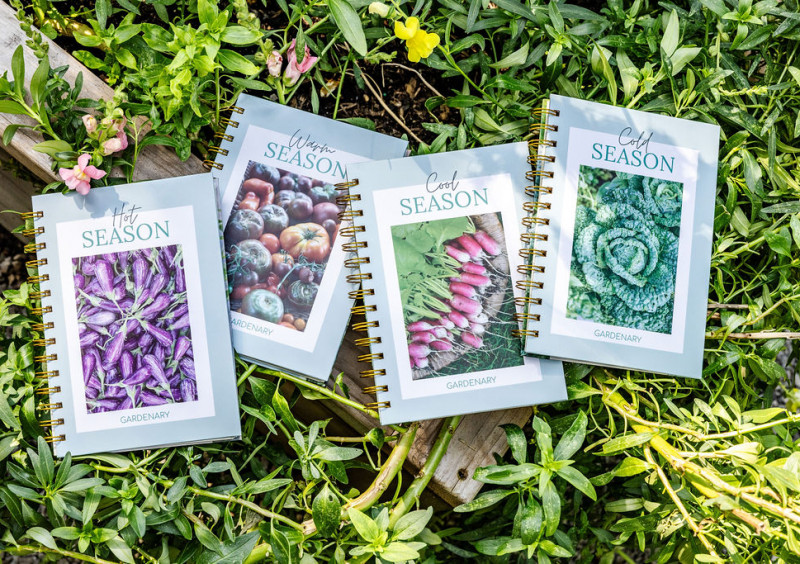
Carrots
Carrots are a fall favorite for good reason. Their seeds germinate best when the soil is between 55°F and 75°F, and the roots become especially sweet after a few cool nights. Sow carrot seeds about ten to twelve weeks before your first expected frost. Keep the soil evenly moist, and thin seedlings early to avoid crowding.
Gardenary Tip: Carrots sprout best when the soil stays between 55°F and 75°F. Use simple garden covers to help regulate that temperature. In cooler weather, a frost cloth or cold frame can keep the soil warm enough for germination. If you’re planting in late summer heat, try a shade cloth instead to cool things down. Once the seedlings appear and the weather evens out, remove the cover and let your carrots grow freely.
Want to know exactly where to plant your radishes and carrots for a beautiful, productive garden layout? Check out Two Easy Planting Plans for Garden Success and get started with confidence.
Beets
Beets are a beautiful two-for-one crop—both their roots and greens are delicious. Plant them about eight to ten weeks before frost. They sprout quickly, and the greens are ready to harvest within a few weeks, while the roots mature a bit later.
Beets appreciate loose, fertile soil and consistent watering. Their flavor deepens in cool weather, and the roots store well for months once harvested.
Gardenary Tip: About three weeks after planting, thin your beet seedlings so you have around nine per square foot. This gives each root plenty of room to grow round and full. Look for spots where seedlings are too close together and remove the weaker one by snipping it at the soil line with scissors. Cutting instead of pulling keeps nearby roots undisturbed—and as a bonus, those tender greens you trim are delicious and packed with nutrients.


Start Your Garden the Easy Way
Get growing with 10 foolproof seed varieties, a 120-page gardening guide, planting plans, and step-by-step video lessons—all designed to help you succeed. The Easy Garden Kit makes it simple, fun, and affordable to bring fresh food and flowers to your backyard.
Turnips
Turnips are the workhorses of the fall garden. They’re easy to grow, fast to mature, and delicious roasted, mashed, or sautéed. Plant them about eight weeks before frost, and harvest when roots are two to three inches across.
Don’t forget the greens! Turnip tops are tender and packed with nutrients when young.
Gardenary Tip: If you want sweeter turnips, leave them in the ground through a light frost. The cool weather boosts their sugar content, making them milder and more flavorful.
The Easiest Root Crops to Grow
If you’re new to gardening or just want quick success, start with radishes and carrots. You can find both of these in our Easy Garden Kit, making it simple to get started with the right seeds and supplies.
Radishes grow fast, need little care, and give nearly instant results—perfect for building gardening confidence.
Carrots take longer but are equally satisfying, especially once their roots turn sweet in cool soil.
Planting these two together not only saves space but also teaches you how root vegetables respond to fall’s changing weather. They’re the perfect pair for your first—or your best—fall root harvest.
Ready to keep growing? Take a look at the other easiest plants to grow in the cool season and expand your kitchen garden one success at a time.
A Final Tip from The Gardenary Way
I’ve found it’s best to dedicate one entire bed to root crops and plant the seeds successively over several weeks. As long as the temperatures remain in the optimal range, you can sow new root seeds every one to two weeks throughout the growing period.
Successive sowing won’t necessarily increase your total harvest, but it will give you a steady supply of roots over time—rather than four hundred all at once in your kitchen sink. It also keeps your garden active and productive from late summer through the final weeks of fall.
Otherwise, it’s tricky to know what to do with a massive harvest of roots if they’re all ready at the same moment. A steady flow of crisp, flavorful crops is far more enjoyable than a sudden avalanche!
Looking for more to grow this fall? I recommend planting salad greens—they thrive in cool weather and pair beautifully with your fresh root harvests. Get all the details in The Ultimate Guide to Growing Your Own Salad Greens.

